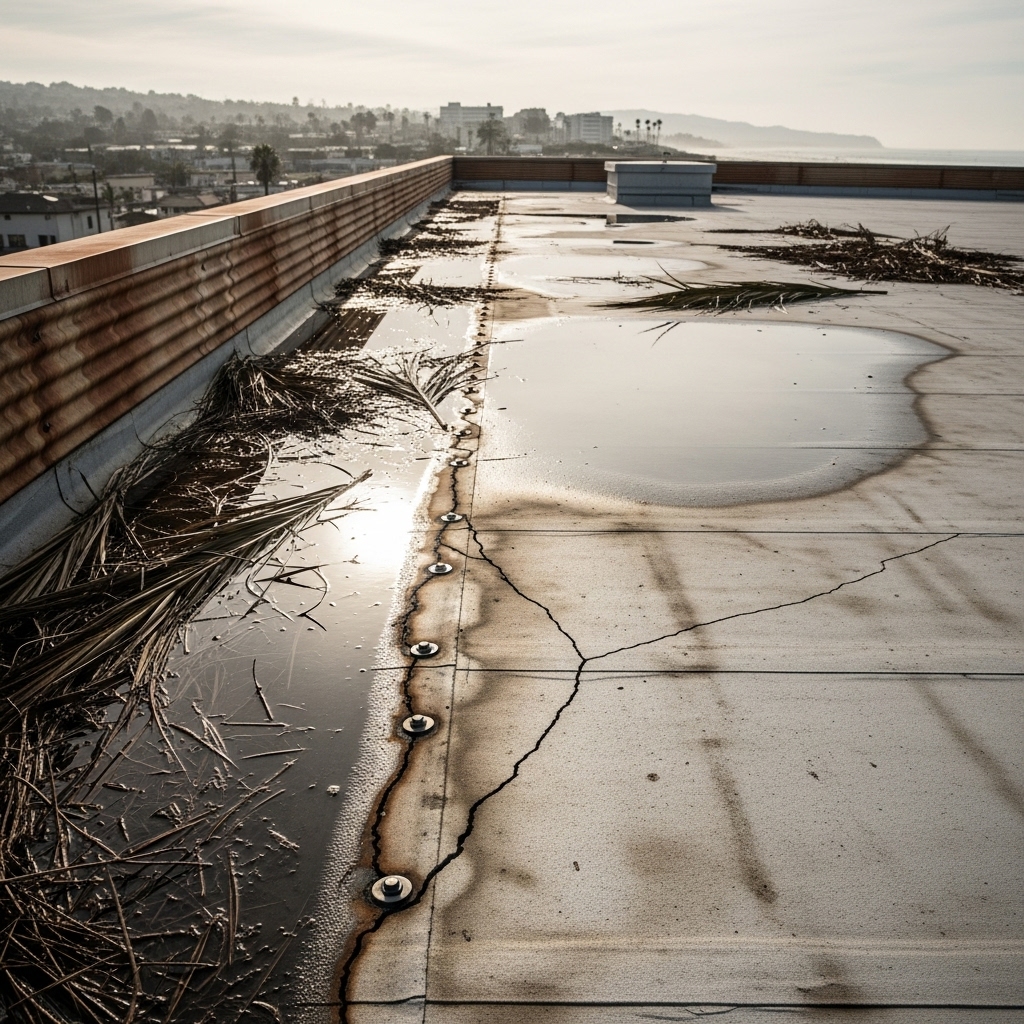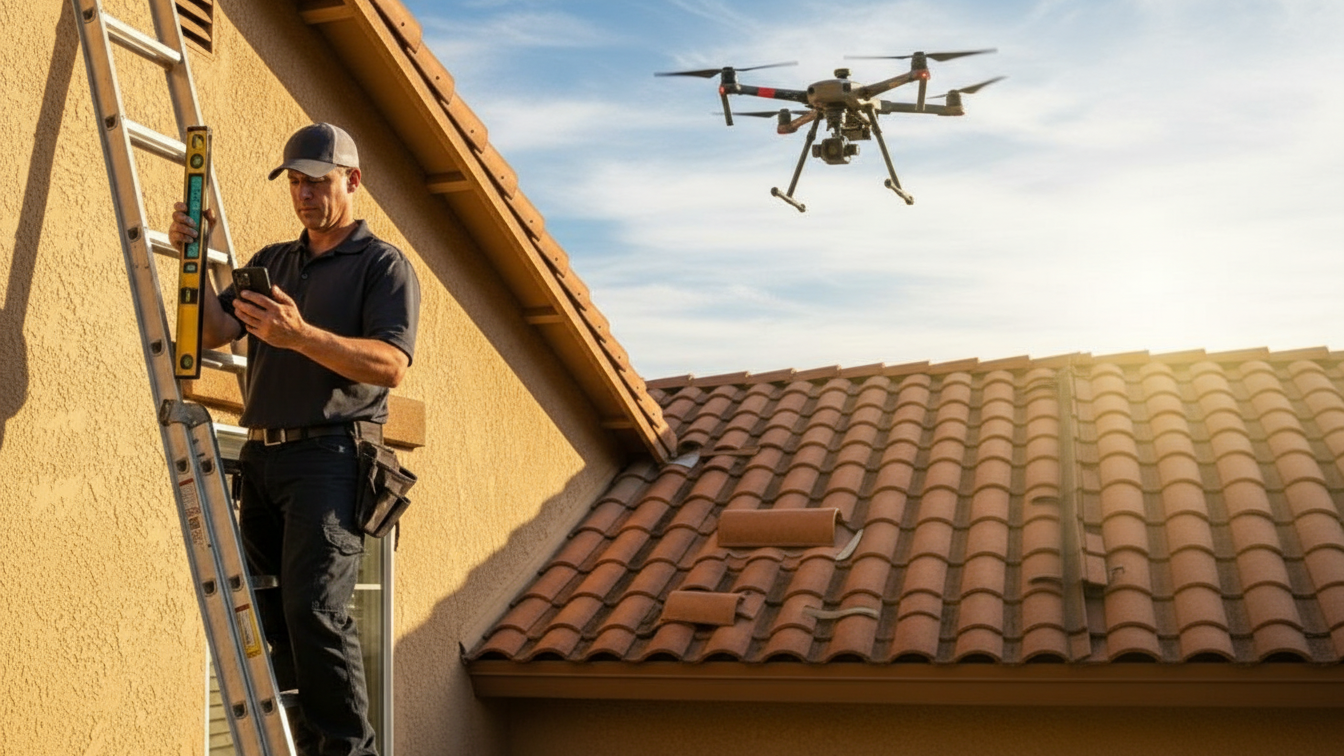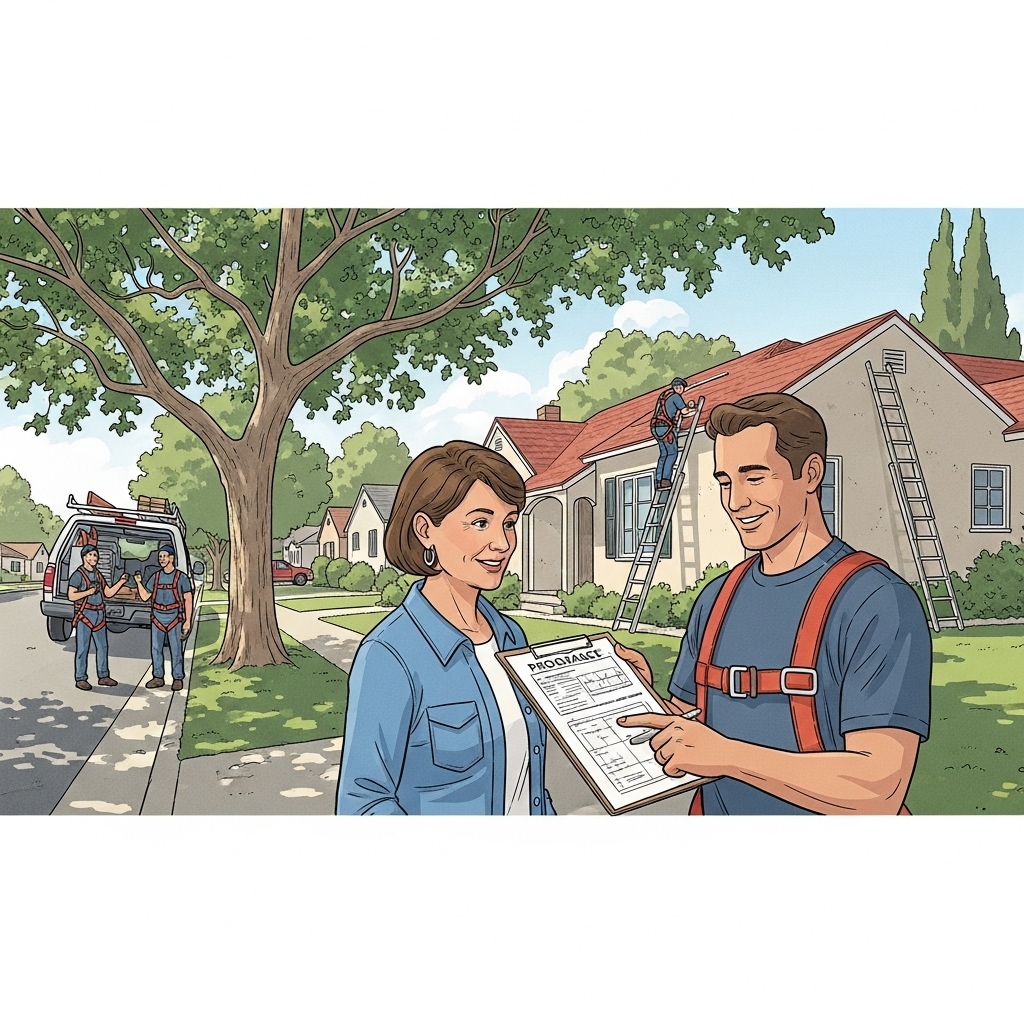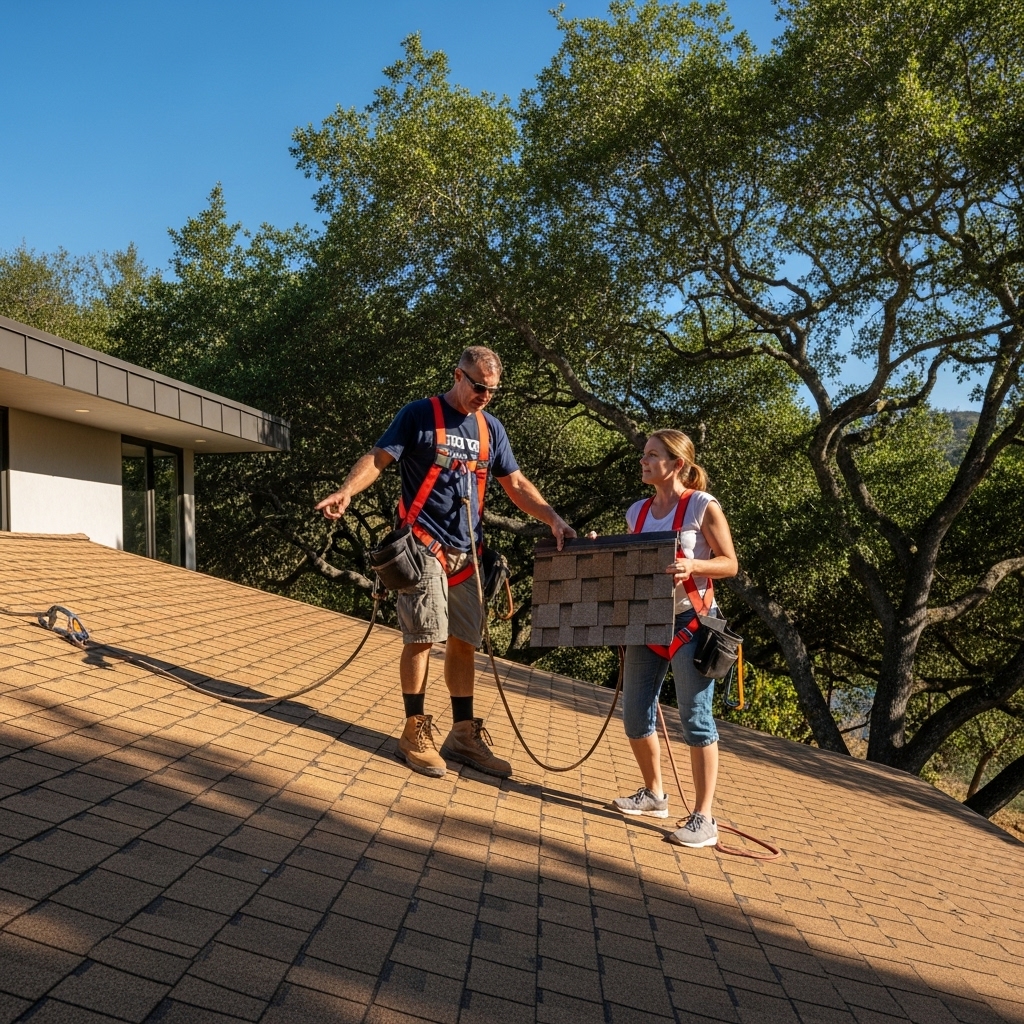From the waterfront to the foothills, Santa Barbara’s commercial roofs face a set of challenges that are as local as our morning marine layer and as specific as the sundowner winds that sweep off the Santa Ynez range. If you manage property here, you already know that a roof can look fine from the street and still hide vulnerabilities waiting for the next gust or downpour. Understanding the most common issues we see on area rooftops helps you prevent small defects from becoming disruptions to tenants, customers, and operations. It also informs smarter decisions about materials and detailing when it is time to repair or replace with durable commercial roofing solutions tailored to the coast.
Santa Barbara’s climate is friendly to people but demanding on building envelopes. Gentle temperatures mask the cumulative effects of UV exposure, salt-laden air, and intermittent heavy rains. Our roofs need to shed water quickly, resist wind uplift, and handle daily cycles of moisture and sun. These conditions expose details that are merely adequate in other cities but insufficient here. The recurring themes below show up across roof types, from single-ply and modified bitumen to metal and built-up systems.
Ponding water and inadequate drainage
Ponding is perhaps the most persistent issue on low-slope commercial roofs in the area. Even with mild storms, drains can clog with jacaranda petals, palm debris, and windblown grit from nearby beaches. When water lingers longer than 24 to 48 hours in dry conditions, membranes soften, seams are stressed, and fine silt left behind can abrade the surface under foot traffic. Over time, ponding accelerates aging and increases the likelihood of leaks, often showing up along the edges of the depressed area or around poorly supported equipment pads.
Inadequate slope exacerbates the problem. Older buildings with flat decks may rely on minimal slope to drains, and any settlement or decking patchwork can create birdbaths. Strategic fixes include cleaning schedules, adding or resizing drains and scuppers, and installing tapered insulation to reestablish flow lines. In storm-prone seasons, a quick check after the first rain can prevent a season’s worth of issues.
UV degradation and thermal cycling
Our sunny afternoons invite UV exposure that chalks coatings, embrittles some membranes, and weakens exposed sealants. Thermal cycling—the daily expansion and contraction of materials—compound the effect at seams, corners, and transitions. You may see micro-cracks at outside corners, lifted laps where adhesives have aged, or crazing on older coatings. Left unaddressed, these small defects allow water intrusion during the next rain, which then spreads laterally beneath the membrane and appears far from the source inside the building.
Managing UV impact begins with choosing materials formulated for high-exposure sites and maintaining protective coatings. Careful observation is key, especially at south- and west-facing edges that take the brunt of afternoon sun. A proactive recoat or reinforcement at known stress points often restores performance without major disruption.
Salt and corrosion at metals and fasteners
Salt-laden air reaches farther inland than many expect, especially on breezy days. Corrosion at fasteners, edge metal, and equipment rails is a common sight if components are not properly coated or made from compatible alloys. Once rust starts, it can stain parapet walls, undermine fastener strength, and create pathways for water at terminations. Galvanic reactions between dissimilar metals can quietly accelerate the problem, especially where copper meets galvanized steel or where aluminum interacts with steel without isolation.
Routine cleaning, inspection, and spot-coating extend metal life dramatically. Selecting stainless or appropriately coated fasteners from the outset, and isolating dissimilar metals, reduces long-term maintenance and keeps edges tight through windy seasons.
Wind uplift and edge vulnerabilities
We do not see hurricane-force winds, but sundowner events can produce surprising gusts that test the perimeter of any roof. The physics are simple: uplift forces concentrate at edges and corners, which is precisely where reduced fastening or aging sealants may reside. Symptoms include slight flutter at membrane edges, loosened gravel stop, rattling gutters, and in severe cases, peel-back at the first course of material.
Addressing wind vulnerability starts with strong edge details and appropriately dense fastening patterns, verified in the field and not just on paper. Periodic checks before windy seasons confirm that terminations, gutters, and downspouts are secure. In retrofit situations, upgrading edge metal and reinforcing corners can produce immediate improvements.
Penetrations and equipment curbs
Commercial roofs in Santa Barbara carry a lot of equipment. Each penetration—pipes, conduits, drains, and especially curbs for HVAC and exhaust—represents a point where movement, vibration, and maintenance traffic stress the surrounding membrane. Kitchen exhausts can introduce grease, which degrades certain materials, while telecom and solar installations often add dozens of small penetrations that demand consistent detailing.
Common issues include cracked counterflashings, poorly sealed pitch pockets, and displaced storm collars. Over time, minor gaps can become pathways for wind-driven rain. Using standardized details, reinforcing around curbs, and employing walk pads reduce ongoing risk. Coordinating with trades so penetrations are grouped and sealed once, not repeatedly disturbed, is equally important.
Seismic and structural movement
This is California, and buildings move. Even small shifts from thermal expansion or minor seismic activity can tug at seams and flashings. On older structures with patchwork decks, slight deflection under load can break brittle repairs. You might notice a recurring split at the same parapet corner or a seam that opens each summer and re-seals in winter. These are clues that movement accommodation is missing, not merely that a patch failed.
Solutions include adding expansion-friendly details, using flexible sealants where appropriate, and reinforcing stress-prone transitions. Observing the pattern and addressing the cause saves repeated trips and interruptions to business operations.
Organic growth and cleanliness
In shaded sections, especially near parapets or under equipment, moisture can linger and support algae or moss. While not always structurally harmful, organic growth traps moisture, makes surfaces slippery, and hides defects. It can also contribute to odors if combined with kitchen exhaust residues. Gentle cleaning with roof-safe methods restores drainage paths and reveals conditions that need investigation.
Debris management is equally important. Leaves, wrappers, and windblown grit gather in the same spots, year after year. A simple quarterly sweep and drain check prevents blockages that would otherwise lead to ponding and interior complaints during the first big rain.
Insulation and vapor considerations
While Santa Barbara’s temperature swings are moderate, buildings still benefit from effective insulation and thoughtful vapor control. Poorly performing insulation manifests as hot spots beneath the roof, overworked HVAC, and condensation issues during cool, moist mornings. In reroof projects, wet insulation is a common discovery near long-standing ponding areas or at leaks that traveled unnoticed. Removing and replacing saturated sections, followed by improved drainage and vapor strategy, resets the system on a strong footing.
Insulation levels that meet modern standards also support occupant comfort and stabilize interiors, which matters for offices with sensitive electronics or businesses with strict temperature needs. Roof upgrades that address these considerations deliver day-to-day value far beyond the roof surface itself.
Coatings: benefits and pitfalls
Santa Barbara’s sun makes reflective coatings attractive, and they can be excellent life-extenders for sound roofs. Problems arise when coatings are used to mask fundamental issues, or when preparation is rushed. If trapped dirt, grease, or salt remains on the surface, adhesion suffers. If ponding is not corrected first, coatings may blister or peel. The key is honest evaluation: if the underlying system is healthy, a coating can perform beautifully; if not, a more comprehensive repair or replacement is the right path.
When coatings are appropriate, pay attention to cure windows and weather. Applying during a warm, dry stretch gives the product its best chance to bond, resist UV, and stand up to coastal moisture cycles.
Rooftop traffic and contractor coordination
Many of the leaks we troubleshoot trace back to human activity rather than weather. A dropped fastener lodged under a solar panel, a sharp tool scuff near an HVAC curb, or a vendor shortcut across a membrane without walk pads—all are common. Clear access routes, signage, and a basic orientation for anyone who goes on the roof transform this category of problems. When the roof is treated as an active workspace, not just a surface, incidental damage declines sharply.
Coordination during busy seasons matters. Summer tourist months bring heavy restaurant use and rooftop service, while fall brings pre-rain maintenance. Scheduling work thoughtfully reduces conflicts and allows for proper cure times on patches and coatings so they achieve full strength before the next weather shift.
Making the most of professional support
Not every issue warrants a major intervention, but timely professional assessment pays dividends. Local teams see patterns quickly and provide solutions that fit our microclimates, from the breezier blocks near Goleta to the warmer Eastside. They also understand permitting and reflectivity standards, ensuring that improvements align with code while preserving the building’s character and function. When you partner with experienced providers of commercial roofing, you get more than patches; you get a roadmap to a calmer, more predictable maintenance future.
FAQ
Q: What is the number one cause of leaks on local commercial roofs? A: Most leaks begin at details—seams, penetrations, and edges—especially where drainage is inadequate or traffic is heavy.
Q: How does salt air affect my roof? A: Salt accelerates corrosion on metals and undermines fasteners and terminations over time. Cleaning and protective coatings, along with material compatibility, are essential along the coast.
Q: Can a reflective coating solve heat and UV problems? A: Coatings help when the underlying system is sound and preparation is thorough. They are not a substitute for correcting drainage or structural issues.
Q: Do sundowner winds really create uplift issues? A: Yes. Uplift forces concentrate at edges and corners, making robust edge metal and fastening crucial for Santa Barbara roofs.
Q: How often should drains be checked? A: At least quarterly and before the rainy season, with quick checks after the first storm or a windy day that may move debris.
Q: Is ponding water always a defect? A: Persistent ponding indicates a problem and shortens roof life. Isolated shallow wet areas that dry quickly are less concerning, but should still be monitored.
Q: Should I worry about seismic movement? A: While most events are minor, movement can open seams and crack brittle details. Expansion-friendly solutions reduce repeat failures.
If your building is experiencing any of these issues—or if you simply want certainty before the next wet season—now is the time to act. Schedule a thorough evaluation, set a clear maintenance plan, and resolve small problems before they grow. When you are ready for a calm, practical path forward, connect with local experts in commercial roofing who understand Santa Barbara’s conditions and can guide repairs, upgrades, and long-term care.






